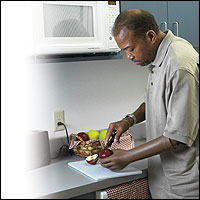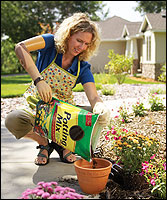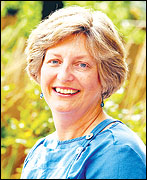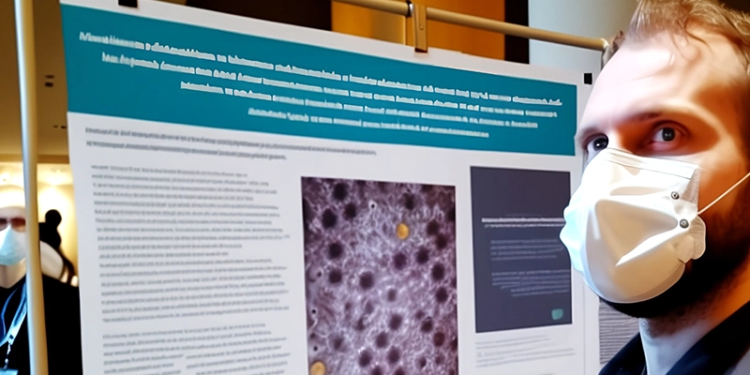Those faced with limb loss must suddenly deal with a dramatically different set of challenges associated with daily living. For most, the circumstances surrounding their amputation are unexpected, throwing them abruptly into a situation with which they have little or no experience—and where major life-changing decisions must be made quickly.
Developing skills for life begins in the hospital, immediately following amputation. This is the period when amputees and their families begin gathering information. Their research often includes Internet sources and locating a peer supporter who can answer their questions.
 |
| Photographs courtesy of Otto Bock HealthCare. |
“At a time like this, they don’t want to hear from a therapist or other healthcare professional,” observes Sandy Fletchall, OTR/L, CHT, MPA, FAOTA, Capabilities for Living, Lakeland, Tennessee. “They want to talk to another amputee who has been in their situation.”
Many amputees volunteer to provide such peer support, often through an organized national group such as the Amputee Coalition of America (ACA), Empowerment Partners, or others. (See “Overcoming Mental Roadblocks“)
Attitude, Proper Equipment Are Essential
The proper mindset is vital in developing useful skills for life.
“In my opinion,” says Mark Edwards, MHPE, CP, clinical specialist-prosthetics, Otto Bock HealthCare, Minneapolis, Minnesota, “the key to succeeding in activities of daily living for patients is to have the motivation to achieve a specific goal.”
 |
| Photographs courtesy of Otto Bock HealthCare. |
One of those specific goals might involve being fitted with and learning to use a prosthesis; however, people with upper-limb amputations are far less likely to wear their prosthetic devices. “They say that almost 50 percent of amputees with upper-limb loss don’t wear their prostheses,” says Bob Radocy, CEO and president of TRS, Boulder, Colorado. “I believe this is because the limbs or harness don’t fit comfortably, or the prosthesis just doesn’t provide the wearer with enough function.”
Upper-limb prosthetic technology has come a long way in recent years; so far, in fact, that Radocy encourages non-prosthesis wearers to take a second look. Two years ago, Medicare also approved new L-Codes that apply to sports and recreational accessories, including activity-specific devices that make it possible for upper-limb amputees to participate competitively in hobbies such as archery, swimming, rock climbing, and wind surfing.
Making sure that amputees have the proper equipment to participate in daily activities is essential, says Kevin Carroll, MS, CP, FAAOP, vice president of prosthetics, Hanger Prosthetics & Orthotics, a division of Hanger Orthopedic Group, Bethesda, Maryland. Carroll has seen patients come into the office in non-amputee wheelchairs, which pose a serious tip-over hazard for amputees, due to the location of their center of gravity.
Crutches are a similar source of concern. “We don’t like to see lower-limb amputees hopping around on their good leg,” Carroll says. “It can allow damage to their knee, ankle, and hip, and could very well cause a fall. A quality pair of crutches could protect them for a lifetime.
“Most falls occur without the prosthesis being on,” Carroll says. “You need good assistive devices for those times.”
Tips and Skills
Lower-limb amputee Chad Thompson, patient education coordinator for Hanger P&O, advises new amputees to get their house in order with a safety check before transitioning from the hospital. Obstacles that require tricky navigation can result in a fall that could be very damaging to the residual limb. “Install appropriate assistive devices such as a shower chair or grab bar in the bathtub or shower,” Thompson says. “Those little things are important.
“I worried about getting out of bed in the middle of the night, early on,” Thompson remembers. “I learned the hard way; I fell first because I forgot my left leg wasn’t there. I had kept my crutches out of the way, hidden under the bed, but after my fall, I propped them up against the wall so that when I got to the edge of my bed, I would see them and it would remind me.”
Thompson also advises sticking with the same soaps normally used, rather than switching brands, which can cause rashes.
People who lose their right leg—their gas-pedal foot—should get adaptive equipment put on their vehicle so that they can drive safely, Thompson advises. “You might get by without it on the interstate, but when you’re on secondary roads and side streets—and a little kid runs across the road and your reaction time is not the same because you have something artificial there—those extra seconds can mean life or death.”
For extra help getting into and out of a car, Carroll recommends taking along a removable grab bar that fits into the door latch.
While he notes that the United States is probably the most accessible country in the world, it is still possible for amputee travelers to discover some older buildings that are difficult to access. “But people get smart as they travel,” he adds. “Bathroom-wise, most know that McDonald’s is a good bathroom to use—larger and more accessible, typically pretty clean, and you can find them nearly everywhere.”
 |
| Stella Sieber |
Bilateral lower-limb amputee Stella Sieber points out that the American with Disabilities Act (ADA) guidelines regarding access to public buildings are just that—guidelines. They are not well defined and are open to wide variations in contractor interpretation. “Even things being built, constructed, inspected, and approved in 2009—like sidewalk cut-throughs and ramp grades—are not always to code.”
On her own home turf in Durham, North Carolina, Sieber plans her errands around those few places with the best and most accessible bathrooms, including a downtown grocery/restaurant, and her own church, to which she carries the keys.
Sieber uses a wheelchair at home when she takes off her prostheses. “I modified my bathroom, which now has a roll-in shower and a sink I can roll under, as well as grab bars in the right places, and the right things in the roll-in shower.”
When travelling, she calls the hotel or resort in advance.
“If the hotel people don’t know the answers, I ask them to measure and call me back. I ask the width of the door, which way it opens, exactly where grab bars are located at the commode and the shower, and if it is a roll-in shower. Does it have a showerhead on a sliding bar? Can I reach the hand-held showerhead in a sitting position? Is the furniture movable so I can get the wheelchair around the bed?”
Shawn Swanson, OTR/L, national director of occupational therapy, Advanced Arm Dynamics, Redondo Beach, California, agrees that forethought and planning are crucial. “In most scenarios, preplanning is the key,” she says. “In childcare (for an individual with bilateral upper-limb loss), that means getting everything out, ready and in one spot—for diaper changing, putting on a onesie, seating them in a high chair or car seat, etc. And they need to allow themselves enough time to complete these tasks to stay on schedule.”
Julie Klarich, OTR/CHT, an upper-limb specialist at Presbyterian/St. Luke’s Medical Center, Denver, Colorado, and Fletchall have developed lists of helpful tips for amputees to assist them with a variety of daily tasks (see pg. 32).
More Resources on the Horizon?
Swanson guesses that there are probably fewer than 200 physical therapists around the world who have had extensive experience working with someone who has lost an upper limb—and probably fewer than 50 who have treated multiple clients with bilateral upper-limb loss.
“There are many different and unique needs for a person who has lost both limbs. A specific conference or meeting dedicated to those individuals was needed,” Swanson says, explaining the circumstances that led to the first Skills for Life: Bilateral Upper-Limb-Loss Conference, which was held in Denver in 2002.
Swanson, Klarich, Fletchall, and others gathered again in October 2008 for the second Skills for Life conference, which had more than doubled in size, drawing approximately 170 audience members, as well as speakers from Sweden, Australia, Canada, and the United States.
The 2009 Skills for Life conference focused on practical solutions; people with limb loss formed breakout groups and learned tips and tricks for toileting, childcare, and more. “The general take-away point was that people were exposed to a lot of different methodologies that gave them ideas and starting points, where before they had no idea how to approach a solution,” Swanson says.
Participants hope to repeat this conference on a triennial basis, but no future date has been determined, and organizing has not yet begun. As information becomes available, it can be accessed at sites.google.com/site/skillsforlife3
Judith Philipps Otto is a freelance writer who has assisted with marketing and public relations for various clients in the O&P profession. She has been a newspaper writer and editor and has won national and international awards as a broadcast writer-producer.
Handling the Day-to-Day: Tips for Amputees
|
Fletchall’s Repertoire |
General Tips
Meal Preparation
Hygiene
Child Care
|




